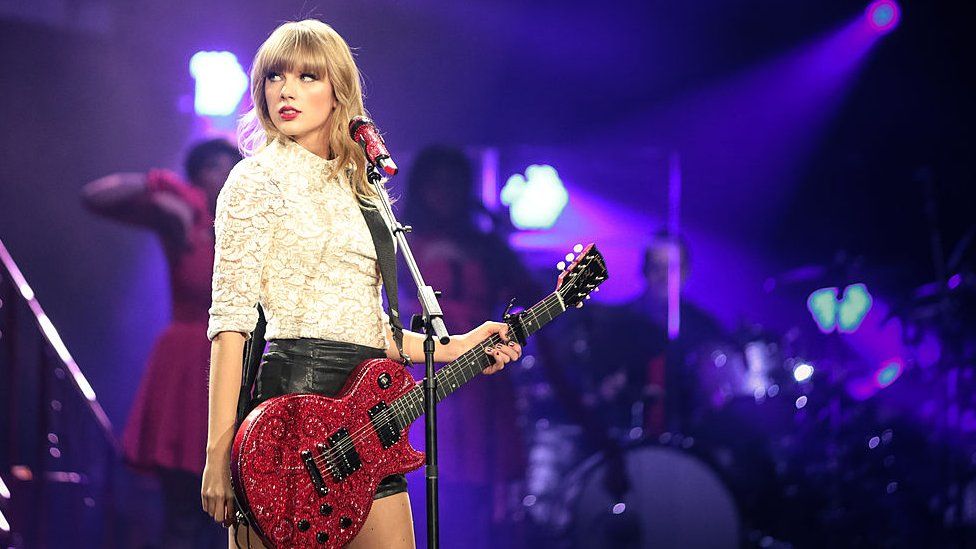US officer plays Taylor Swift song to try to block video
A US police officer played a Taylor Swift song on his phone in a bid to prevent activists who were filming him uploading the video to YouTube.
The video platform regularly removes videos that break music copyright rules.
However, the officer's efforts were in vain as the clip of the encounter in Oakland, California promptly went viral.
Alameda County police told the BBC it was not "approved behaviour".
The video was filmed by members of the Anti Police-Terror Project (APTP), which says it is a coalition that seeks to "eradicate police terror in communities of colour".
Some of them were protesting outside the courthouse at the pre-trial hearing of a San Leandro officer charged with the manslaughter of a black man.
In the video, the officer says: "You can record all you want, I just know it can't be posted to YouTube."
When asked if playing music in this way is procedure, the officer responds: "It's not specifically outlined."
Later in the video, he confirms: "I'm playing music so that you can't post on YouTube."
The sheriff's department said: "We have seen the video and referred it to our internal affairs bureau. This is not approved behaviour. It will not happen again."
The video, which was posted on 1 July, has had more than 180,000 views and remains online. It is also visible on the APTP's Twitter page.
Vice news has reported on cases of other California-based officers starting to play Beatles songs while being filmed.
And activists have suggested this is so clips are removed, because of copyright issues surrounding the music.
On the YouTube page, the APTP wrote: "We'd heard about this phenomenon, but no-one had captured it on video until now. Now not only do we have a video of a cop doing it, we also have the cop admitting why he was doing it".
How is copyright enforced online?
While video-sharing platforms and social networks do use automated systems to flag and remove copyright material, the rules vary.
YouTube has a number of copyright management tools, including a system called Content ID.
"Videos uploaded to YouTube are scanned against a database of files that have been submitted to us by content owners," it says.
Copyright owners can then decide whether to block, monetise or track the content.
But the idea that playing copyright music could be a tactic used by police to avoid sharing online and on social media has attracted serious attention following the removal of activist videos.
Last year, Nick Simmons and Adam Holland of Harvard University's Lumen project, which studies copyright content removal, noted that a number of videos linked to Black Lives Matter protests had been removed because they contained copyrighted music.
The researchers suggested that "law enforcement", or anyone else who wanted to stop videos being shared, "need only make sure that copyrighted audio is present with sufficiently recognisable clarity and volume in the background of a protest or other event".

Comments
Post a Comment